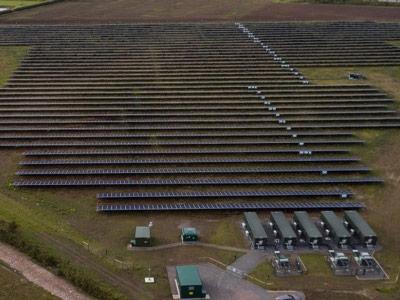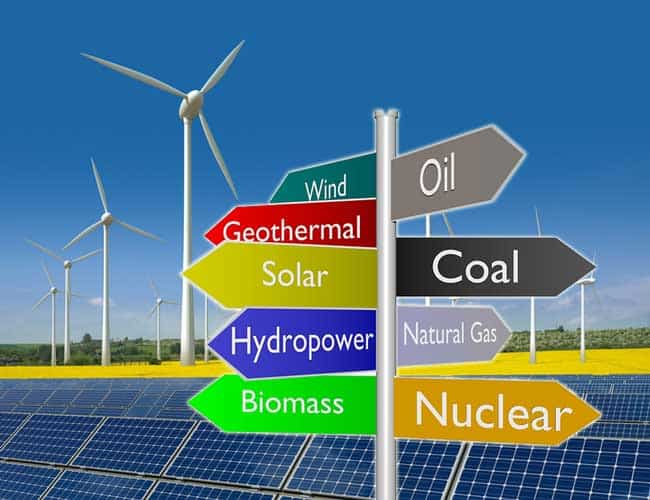In an increasing number of regions in the U.S., solar (and wind) power can produce electricity at the same cost – or lower – than more traditional fuels, like coal or natural gas.
We call it reaching “grid parity” here in the business.
The catch, however, is what happens when government subsidies are removed from the calculation.
That’s why what happened at the end of September in the UK may be a sign of things to come across the pond here in the U.S.
See, the British just brought a new solar power project online without relying on subsidies. Only the market will dictate what this power plant gets paid.
And the way they did it shows where the solar industry and energy markets in the U.S. are headed next…
The British Just Opened the First Subsidy-Free Solar Power Plant
On September 26, the UK’s newest solar farm, the Clayhill, opened near Flitwick in Bedfordshire. It is the very first in the country to operate with no government subsidy, with its developers Anesco instead relying only on the market value of its power generation.
Following the Conservative Party’s election victory in 2015, quick and significant subsidy cuts hit the solar industry. Yet the opening of Anesco’s plant may indicate things are changing in the UK.
With the Trump Administration’s declarations creating a debate over ending any remaining U.S. renewable power subsidies, what is unfolding in the British countryside may be a model for what is going to happen in the American market.
In some of the areas of the U.S. where solar has achieved grid parity, subsidies have already been removed from the equation.
But the question of public-sector assistance to solar power has remained an integral element of the conversation.
And there’s another aspect to consider when looking at the actual cost of generating power.
Due to the intermittent nature of the power flow from either solar or wind, an increasing reliance on renewables will still require redundant backup power sources.
Because when the sun isn’t shining or the wind isn’t blowing, no power is generated – but the demand is still there.
That means some of the traditional electricity generation that may be “replaced” by solar will still have to be attached to the grid as insurance against solar power shortfalls or peak period demand.
And this makes the issue of how much solar power generation costs without subsidies that much more important…
The Main Cost-Saving Didn’t Come from Solar Technology…
Now, there are several factors that have allowed subsidy-free solar generation to be feasible in the UK.
At the top of the list is the still-falling cost of solar panels. Anesco has magnified that cost advantage by engineering further cost savings through the supply chain.
By using more efficient components and minimizing construction costs through measures including not burying cables underground, the firm managed to reduce costs by a third.
According to Anesco technical director Lily Coles, a combination of these apparently innocuous moves made a significant difference. “If you look at another solar farm there’s nothing fundamentally different, it’s just the use of different components and different technologies,” she told BusinessGreen last month. “We looked at design, we looked at technical specifications, we looked at the very latest technology, and all the different costs of all the various components.”
But the real breakthrough that has enabled subsidy-free solar is found elsewhere, in the falling cost of battery storage.
That suddenly removes the need for solar developers to sell their power as it is generated, regardless of the price they’ll get.
Rather than selling into the grid during the middle of the day when demand is low, developers can store generated power in batteries and wait until the evening peak before releasing their power to the grid, taking advantage of peak prices.
The 31,000-panel, 10 Megawatt (MW) solar farm contains a 6 MW battery.
In addition to meeting storage needs for the provision of power during peak demand times, this setup can also earn the company revenue for providing other services to the UK national grid, such as frequency response support to help stabilize the broader power system.
The Clayhill solar farm will provide power for 2,500 homes, and is acting as a template for at least five more sites Anesco is planning to develop in the next 18 months. However, a number of barriers remain to the model’s rapid acceleration across the industry.
Clayhill is an Exception – for Now…
First, location remains crucial.
In the UK, grid connection costs remain high, and in some regions where solar plants are already relatively common, grid connection is almost impossible to obtain.
Anesco saved on its Clayhill connection because it shares a connection with the existing Renewables Obligation-accredited site just next door, a situation that is not likely to exist elsewhere.
Then there is the ongoing uncertainty over the structure of the UK energy market. Some rather wide-ranging studies are underway to allow applications of decentralized generation as the national power grid is expected to provide a greater incentive to storage projects. But these plans are still in the early stages of development and may not deliver on all the industry’s requirements.
The UK renewable industry is also awaiting news on participation in future Contracts for Difference (CfD) auctions. CfD allows a more streamlined access to the market for the lowest cost developments.
Another initiative called the “Clean Growth Strategy” may also allow some market advantages for new solar development.


Still, while the Anesco model may be intriguing, the British Solar Trade Association (STA) has suggested it may be an exception, at least in the short term.
The group says government subsidies would still be required to support the majority of solar projects in future if officials want to use such technology in meeting the UK’s carbon reduction targets.
Critics of the UK’s energy system also argue, as I mentioned earlier, that the costs quoted for renewables projects are misleading as they do not consider the costs of the required redundant power sources.
Therefore, the Clayhill Solar Farm may not be an immediate breakthrough.
But the way in which it has married reduced development costs with an existing solar farm based on earlier technology remains an encouraging sign for those intent on weaning solar from government largess.
It won’t be long until we see similar developments here in the U.S…
https://oilandenergyinvestor.com/2017/11/the-surprising-secret-behind-the-first-subsidy-free-solar-farm/?src=Groupd1









































































































